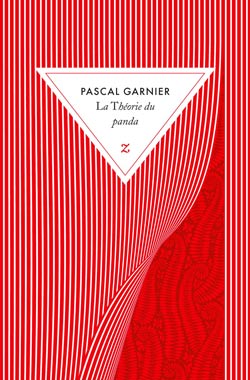 Claude Chabrol’s 1970 French new wave film Le Boucher involves a downcast butcher who becomes involved with a pretty schoolteacher in a provincial town; their blossoming relationship is interrupted by a series of murders that occur in the little village, and it seems one member of the couple might have something to do with the deaths. In Wim Wenders’ 1972 movie The Goalie’s Anxiety at the Penalty Kick (based on the avante-garde Peter Handke novel from ’70), a soccer player who is ejected from a game drifts away from his team and into random but murderous danger. In both stories, a person commits brutal crimes for no apparent reason, seemingly driven to these acts by some longstanding twisted-ness that’s been lurking inside them, festering away under their calm exterior and just waiting for an excuse to erupt.
Claude Chabrol’s 1970 French new wave film Le Boucher involves a downcast butcher who becomes involved with a pretty schoolteacher in a provincial town; their blossoming relationship is interrupted by a series of murders that occur in the little village, and it seems one member of the couple might have something to do with the deaths. In Wim Wenders’ 1972 movie The Goalie’s Anxiety at the Penalty Kick (based on the avante-garde Peter Handke novel from ’70), a soccer player who is ejected from a game drifts away from his team and into random but murderous danger. In both stories, a person commits brutal crimes for no apparent reason, seemingly driven to these acts by some longstanding twisted-ness that’s been lurking inside them, festering away under their calm exterior and just waiting for an excuse to erupt.
If those kinds of tales—where bleak existentialism meets grisly crime—do something for you, then the novels of Frenchman Pascal Garnier are just about a sure bet for you. Likewise, if you appreciate Georges Simenon’s romans durs, i.e. his harder, edgier novels, Garnier is your boy. Thanks to a run of English translations of some of Garnier’s standout titles that have been published over the last few years, those of us who don’t read French can now enjoy some of the work of the obscure (at least here in the U.S.) but brilliant novelist.
Simenon is the writer who gets name-checked the most when people critique Garnier’s novels and search for comparisons. Like Simenon, Garnier (who was born in 1949 and died in 2010) had a flair for combining the humdrum with the extreme. Garnier’s particular speciality, as evidenced in the four novels under discussion below, was looking inside the psyches and hearts of small-town people who have reached a point of desperation. In studying these characters’ lives and acts, he routinely tosses off penetrating philosophical truths like they’re afterthoughts, as the French do so well. There’s dark humor in these short novels, lots of apparently arbitrary brutality that’s all the more chilling due to its seeming randomness, colorful characters, and some lines and passages that hit such a deep place, you just have to put the book down and reflect for a while after reading them.
Garnier, who only began writing when he was 35, was also a painter and a rock-and-roller. In addition to his philosophical crime novels, he penned short stories and kids books. But this article is a focus on the four titles Gallic has gifted us— translations by Melanie Florence and Emily Boyce—so let’s plow ahead with a rundown of each, with the original French publication date noted:
 The A26 (1999)
The A26 (1999)
In a small French village, a spinster who’s haunted by the events of WWII still thinks she sees German soldiers lurking around the front of her house. Her brother is an aging bachelor who has always felt so responsible for his brain-addled sister that he let her come between him and a woman who loved him. The brother now has a terminal illness and is on indefinite leave from work. With all that pent up frustration from having sacrificed his happiness for the sake of his batty sibling, who is cold to him, and with him knowing he’s only got so many days left on this earth, he might just start making some desperate moves, right? Right.
How’s the Pain? (2006)
A career hit-man ready to end his own life has a last few bits of business that need attending to. He meets a gullible 22-year old boy who lives in a provincial town and has a lot of free time. The hit-man, posing as an exterminator (of non-human pests), offers the boy a hefty sum to be his driver on a two-day “business trip.” Off they go. The taut, compelling story of their travels is enriched by memorable side characters: the boy’s mother, a lush who runs a shop in which nothing is for sale; a hardened young woman with a baby to care for, whom the two men rescue (against the hit-man’s wishes) from her abusive husband, and with whom the boy falls in love. As all this goes on, the hit-man remembers something he heard about a part of Africa, where the locals’ customary morning greeting to one another is, “How’s the pain?”
 The Panda Theory (2008)
The Panda Theory (2008)
Gabriel is an odd man. He appears in a Breton town and in his unique, unobtrusive way, starts getting involved in the lives of some of the locals. He has no profession that anyone knows of, yet he seems to have no shortage of money. He has no apparent connection to the town, yet he seems to have no plans to ever leave. He takes it upon himself to become the confidante and consoler of a restaurant owner whose heart is breaking over his wife’s life-threatening illness. He dates a likable, attractive woman who works at the hotel where he’s staying, yet he politely declines her amorous advances even though he admires her seductive looks and enjoys her company. He’s always happy to cook for anyone who might like a good, homemade meal. So who is this guy, really? Clues to that riddle are provided by memory flashback scenes that weave in and out of the story – scenes that show various, tumultuous episodes from Gabriel’s earlier life.
Moon in a Dead Eye (2009)
Five people—two married couples and a single woman—are the first residents of a new seaside retirement community called Los Conviviales. Initially, their time at the place is characterized by the usual human foibles: one of the men makes a play for the unmarried woman, one of the married women is convinced a particular fly is following her wherever she goes, the single lady is prone to blackouts, the caretaker is a humorless man who has no qualms about savagely killing harmless animals who wander onto the grounds, the “social secretary” is a stoner . . . . But when gypsies appear and set up camp in an area that has to be crossed to get from the community to the town’s center, that’s when the residents of Los Conviviales will really start acting out.
Image of the author via interview with Booknoir.
Brian Greene's articles on books, music, and film have appeared in 20 different publications since 2008. His writing on crime fiction has also been published Noir Originals, Crime Time, Paperback Parade, and Mulholland Books. Brian's collection of short stories, Make Me Go in Circles, will be published by All Classic Books in late 2013 or early '14. Brian lives in Durham, NC with his wife Abby, their daughters Violet and Melody, and their cat Rita Lee. Follow Brian on Twitter @brianjoebrain.
See all posts by Brian Greene for Criminal Element.

These sound great, Brian. I’m a big reader of Simenon, never heard of Garnier. Will definitely give him a try.
I bet you’ll like his stuff, Scott. I suggest starting with A26 and moving on from there if you like that.
great article!
These sound quite intriguing! Thanks for digging deep and uncovering these lost classics for us!